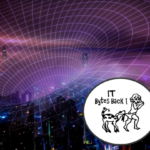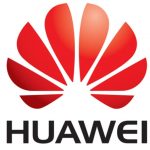Digital Nasional Berhad (DNB) replied to our questions following our article ON THE CONTROVERSY OVER DNBs 5G SINGLE WHOLESALE NETWORK. Click on the link below.
Providing DNB’s answers to Enterprise IT News’ (EITN) questions are Zuraida Jamaluddin, Chief Corporate Affairs Officer and Ken Tan, Chief Technology Officer in verbatim question & answer style below:-
EITN: Is Digital Nasional committed to remain as a wholesale 5G network upon which your various licensed 5G MVNO partners can provide service to their retail subscribers on a level playing field without conflict of interest, or is it possible that Digital Nasional could at some time, provide 5G service directly to your own retail subscribers, thus also competing with the 5G retail MVNO partners which you host?
Zuraida Jamaluddin: DNB is licensed to provide wholesale 5G services to other licensees under the Communications and Multimedia Act 1998 and is prohibited from providing 5G retail services. Therefore, the issue of DNB venturing into downstream services and competing with telcos does not arise.
EITN: As Malaysia’s only licensed 5G wholesale MNO, does Digital Nasional commit to ensure your wholesale network is always operating in top form, with more than enough capacity (“bandwidth”) to carry the voice and data traffic generated by your 5G MVNO partners’ subscribers, since if you let them down, they will have no other option besides you?
Ken Tan: We have adopted stringent and leading design parameters to ensure that the wholesale network is in top form. In addition, from a network availability and resiliency design perspective, we adopted a “no single point of failure design” where there are redundancies built in to prevent DNB’s entire network to fail.
In order to protect against the aforementioned “single point of failure”, DNB’s network topology has been designed as per below:
- All solutions being deployed in DNB network have applications and geographical redundancies.
- For Radio Access Network (RAN) specific, any network failure will be limited to cluster or geographical impact. In any case, the 5G network will integrate with existing 4G network.
- For Core specific, the network has been designed with the telcos’ Core to carry the traffic and each telcos’ Core itself is designed with redundancies. Therefore, there is no single point of failure of DNB’s 5G Core impacting 5G traffic.
- For Operating Support System (OSS) specific, the solution is shared across all telcos; however, the network disruption is limited to operational impact where the operations team can perform manually.
- For Business Support System (BSS) specific, the solution has been designed as a post-paid solution shared across all telcos. This is not a real-time solution that would impact 5G traffic in the event of a failure.
In addition, DNB’s network is monitored 24 x 7 to ensure that DNB delivers on its commitment. From a capacity perspective, DNB collaborates closely with the industry to understand their demands and needs. Finally, as a fully regulated entity under MCMC, we have to be compliant to the high standards set by them.
EITN: Just as Rome proverbially was not built in a day, likewise, it will take some years and billions in investments to eventually deploy Digital Nasional’s 5G wholesale network nationwide, including in remote rural villages such as Kampung Sapatalang, Pitas, Sabah, where student Veveonah Mosibin famously (or infamously) had to climb a tree to be able to attend lectures online due to poor cellular coverage in her village; so will Digital Nasional, as a Malaysian government-owned company, fulfil your national duty as expected, to provide coverage, even of non-profitable areas where ARPU (average revenue per user) is expected to be low, and where coverage has so-far been financed from the Universal Service Provision Fund managed by Malaysian Communications and Multimedia Commission, and at its discretion, so that we no longer read or hear about cases such as that of Veneonah Mosibin?
Zuraida Jamaluddin: The “demand-led” network coverage approach of the past, including that of 4G network was focussed on the more profitable and commercially viable areas first, with outlying and rural areas receiving service availability much later. That is why DNB is taking the accelerated “supply-led” approach for the 5G network deployment to ensure comprehensive coverage throughout the country, thus helping to bridge the urban-rural digital divide.
EITN: Whilst Digital Nasional have been reported by various media as having assured the industry and the Malaysian public that you will keep your wholesale prices low, so your partner 5G MVNOs can pass on the savings to their retail subscribers, whilst still make enough money themselves to make it worth their while; so how committed is Digital Nasional to keep your wholesale prices low in the long term as a 5G communications utility?
Ken Tan: Cost-effectiveness was a major consideration for DNB right at the outset. This is one of five key tenets of DNB’s design and rollout and was a key rationale in our selection of the Multi-Core Operator Network (MOCN) architecture as our preferred model of 5G network deployment.
DNB’s key tenets for our design and rollout strategy are as follows:

The 3GPP-standard MOCN architecture ensures the seamless integration of DNB’s wholesale network with existing 4G networks, avoids duplication of active infrastructure, and maximizes spectral efficiency. As DNB is greenfield, a single Radio Access Network (RAN) reduces the technical complexity to integrate with six different operator’s cores.
It is this consolidation of infrastructure and pooling of 5G spectrum that ensures 5G services are delivered to operators at a significantly lower cost than the present 4G standard.
N.B. For further information on DNB’s MOCN architecture, please refer to DNB’s 10th Nov & 6th Dec press releases, which have been provided to you alongside these responses.
(Dear readers, you may download the press release referred to from the Google Drive links below.)
Digital Nasional Berhad Completes Successful Trial Integration with Domestic Mobile Network Operators
https://drive.google.com/file/d/1X25l2zfKQ1Fi6Rc99QrLs_vAsYVqsM74/view?usp=sharing
MALAYSIA IS 5G READY!
https://drive.google.com/file/d/13OFSrnaG5URambltVZviQaB3T5JPHhkY/view?usp=sharing
EITN: Some people say that 5G will primarily be needed for machine-to- machine (M2M) communications, artificial intelligence, cloud apps and so forth by respective industry and business users, rather than ordinary consumer like us, for whom 4G suffices for all our personal mobile communication and social media access needs on smartphones, etc. – thus 5G will mostly need to be deployed covering urban areas, rather than in more outlying and rural areas.
What does Digital Nasional have to say about that?
Ken Tan: 5G is a major enabler for both consumer and enterprise applications. The early applications around 5G are very much in the consumer space, and these innovations may not be delivered effectively (and at scale) in the present 4G environment e.g. 8K-and-beyond video streaming, cloud gaming, AR/VR applications in both work & entertainment applications, etc.

These early applications will be relevant to consumers regardless of where they live. In order to bring these services to rural and outlying areas, DNB will be enabling operators to provide Fixed Wireless Access (FWA) as a means to bridge last mile 5G connectivity without the need for physical or wired connections.








